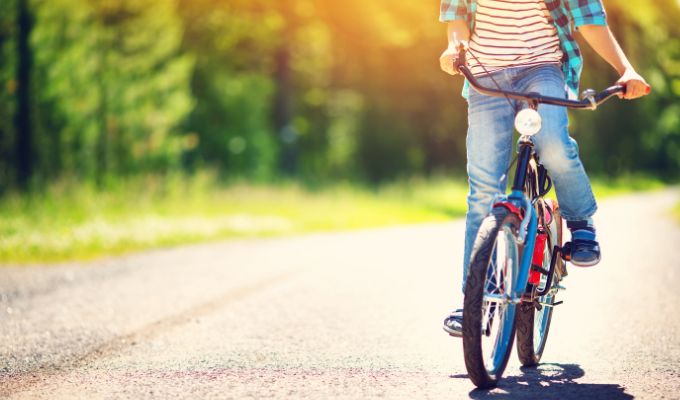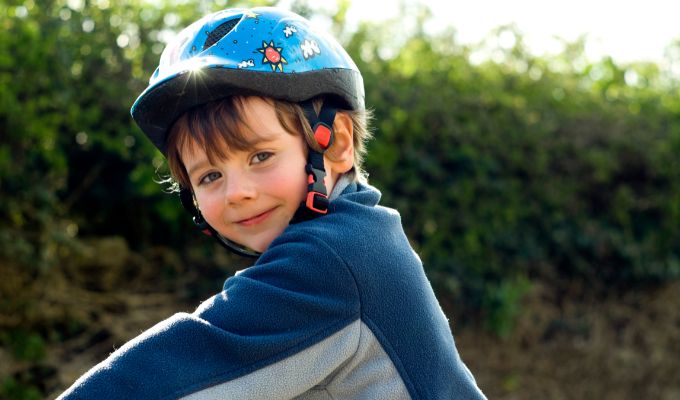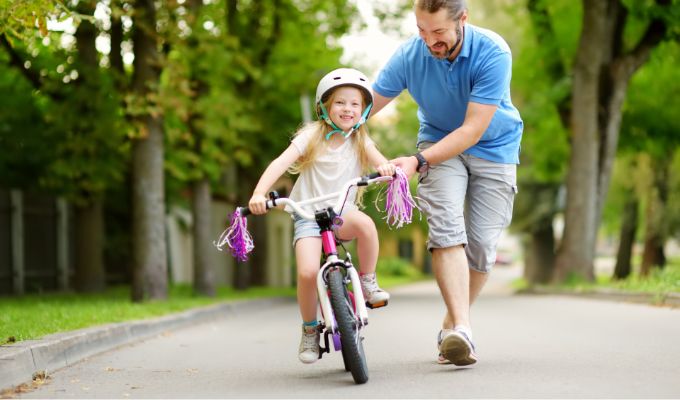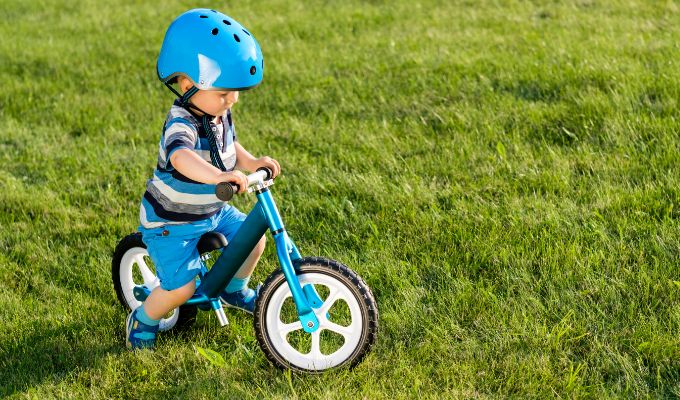Although cycling is a healthy and convenient method for kids to get to and from school, many parents have concerns about their children’s safety and the legal implications of riding on the road.
In this article, we’ll discuss some of these concerns in greater depth, with the goal of helping your kid cycle more safely.
At what age and ability should children cycle on the road?
Children of any age can learn to ride a bike, children as young as 2 are whizzing around on balance bikes. Of course, no parent would allow a toddler to ride anywhere near a road, but there will come a point when you’re child grows older – a more confident rider – and parents will need to know the right time to allow their children to ride on the roadway.
There is no minimum age required by law for riding on the road [1.]. With that said, there are laws when it comes to riding on a public footpath [2.]. It is illegal to ride on the pavement, but children under the age of 10 years (12 years in Scotland) are not “criminally responsible”, so technically can’t be punished for this.
That does not mean children should zoom around on footpaths, they should follow some safety rules, and look to transition to using the road, safely.
In general, children shouldn’t ride on a road until they have completed a Bikeability (cycling proficiency) course with their school. This isn’t a law but is the safest step to riding on the road.
Parents should ride bikes alongside their kids until everyone is comfortable that the kids can handle the bike and roads safely on their own, and have gained got their Bikeability certificate. Only then, should they be allowed to use the roads on their own.
Children may learn to pedal safely and responsibly with the help of the Bikeability scheme. Both novice cyclists and children wishing to gain self-assurance can find an appropriate level here.
Teaching kids about road safety at a young age is essential for their future protection. It’s useful for learning new techniques, gaining self-assurance as riders, and learning to recognise potential dangers on the road.
Students in primary 6 and 7 will usually be offered to join the scheme with their school, for free. Alternatively, you can book a training provider online, which is ideal for parents who are homeschooling.
Participants primary school cycling program will receive a certificate of training rather than a certificate of competence if they have not yet turned nine years old at the end of the scheme.
The law regarding Children cycling on the Pavement
According to law – Section 72 of the Highways Act 1835 made it a criminal offence to “lead or drive” a “carriage of any description” on “any footpath or causeway by the side of any road made or set apart for the use or accommodation of foot passengers”. In 1888, s85(1) of the Local Government Act declared that “bicycles, tricycles, velocipedes, and other similar machines are ‘carriages’ within the meaning of the Highway Acts”.
The police may issue a £50 fixed penalty notice or the court may impose a £500 fine (FPN). In a nutshell, unless it is specifically identified as a cycle track, riding a bike on the pavement next to a road is against the law.
On the other hand, children under the age of 10 (12 in Scotland) fall outside the realm of criminal liability. This renders it impossible to bring criminal charges against children under 10 – 12. Anyone under the age of 16 cannot be served with a fixed penalty notice, either.
Thus, while police officers can legally stop children under the age of 10 who are cycling on sidewalks, they have no authority to arrest, punish, or even advise them. This seems sensible, as it is unreasonable to expect small children to ride bicycles on the street. Cycling UK strongly suggests that people engage in top-notch cycling training in preparation for this transition in later life.
Police have no authority to seize bicycles from people of any age who are lawfully riding them on the sidewalk.
The rules of the road
The next time your kid is out and about, remind them to use common sense and obey the rules of the road.
- Before making a turn, passing, or stopping, check over your shoulder
- Use correct hand signals to indicate before turning
- Observe and obey all posted speed limits and traffic signs
- Do not ride on the pavement unless permitted to do so by a sign
- Avoid riding too close to moving cars
- When passing parked cars, always be aware of a door opening
Teaching kids about road safety at a young age is essential for their future protection. It’s useful for learning new techniques, gaining self-assurance as riders, and learning to recognise potential dangers on the road.
Summary: Children should not ride on a public round until they have completed a Bikeability (cycling proficiency) course and understand the rules for cyclists as set out in the highway code.
Do children have to wear bicycle helmets?
Despite wearing a helmet is not mandated by law in this country, you should nevertheless always do so for your own safety. Children’s brains are developing, and their bones are delicate – they need all the protection they can get, because falls off a bike are guaranteed.
Wearing a high-viz safety vest or other easily visible clothing can go a long way to helping avoid collisions. To set a good example for your kid, you shouldn’t go without a helmet yourself when riding a bike.
Cyclists’ faces and heads account for around half of the injuries they get while riding. In order to prevent serious brain trauma in the event of a fall, always have your child wear a helmet that fits properly.
Make sure the cycling helmet you buy:
- Fits snugly but doesn’t impede vision or cover the ears
- Has secure chin straps with enough room for two fingers between the wearer’s chin and the strap
- Doesn’t have twisted straps
There is a learning curve associated with mastering traffic. You should take your kid to several stations so you can explain what to search for. Riding a bike is a lot of fun, and it’s even more enjoyable if you couple it with a trip or a picnic. Inline skates and scooters are prohibited on the street and must be used on the sidewalk.



